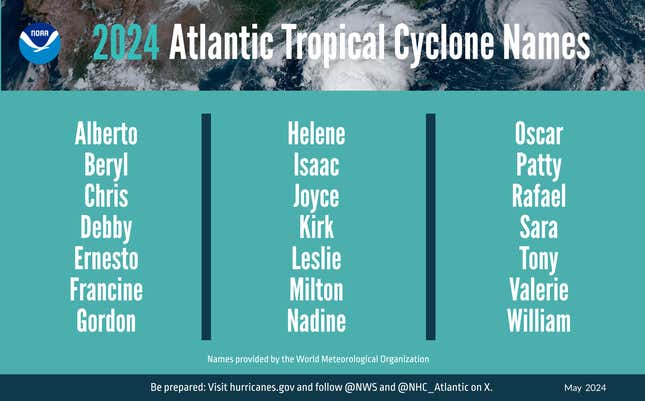Hurricane Beryl was upgraded to a Class 5 storm earlier at this time, making it the earliest storm to hit the heavy-hitting benchmark on file. The storm’s winds peaked at a staggering 160 miles per hour (258 km/hr) because it continued its northwesterly course throughout the Caribbean.
Philip Klotzbach, a meteorologist at Colorado State College, stated on X that the earlier record-holder was Hurricane Emily, which hit Class 5 standing on July 17, 2005. According to The New York Times, Beryl will stay not less than a Class 3 storm because it strikes in direction of Jamaica.
Sadly, Beryl’s expeditious depth isn’t sudden. In Could, the Nationwide Climate Service predicted “above-normal” hurricane exercise for the season, which runs from June 1 by November 30. These months approximate the timeframe by which the Atlantic Ocean and the Gulf of Mexico are inclined to heat up, offering the situations for large storm techniques to type over their waters.
NWS forecasters predicted as much as 25 named storms for the season, 4 to seven of which had been predicted to type main hurricanes, or storms with winds better than 111 miles per hour (178.64 kilometers per hour). Class 5 storms are these with winds that exceed 157 mph (252 km/hr).
Beryl is the second named storm this yr after Tropical Storm Alberto, which petered out in late June after dumping rain throughout coastal Mexico and Texas. Beryl is anticipated to enter the Gulf of Mexico by the weekend, although it’s not clear whether or not it’ll keep its present depth by the point it passes Jamaica.

Life-threatening winds and storm surge are anticipated in Jamaica on Wednesday as Beryl continues to maneuver west simply south of Hispaniola. Jamaica is (clearly) below a hurricane warning, and NWS said a tropical storm warning is in impact for the Cayman Islands and southwestern Haiti.
A paper published earlier this yr within the Proceedings of the Nationwide Academy of Sciences proposed revising the Saffir-Simpson scale for hurricane classes to incorporate a sixth class, to account for storms turning into extra excessive as ocean temperatures heat. Although it’s onerous to attract an express hyperlink between local weather change and excessive climate, warming ocean temperatures and elevated moisture within the air present favorable situations for extra intense hurricanes.
“We anticipated that local weather change was going to make the winds of essentially the most intense storms stronger,” Michael Wehner, a coauthor of the paper and an excessive climate researcher at Lawrence Berkeley Nationwide Laboratory, instructed Grist on the time. “What we’ve demonstrated right here is that, yeah, it’s already taking place. We tried to place numbers on how a lot worse it’ll get.”
The workforce concluded that “numerous current storms have already achieved this hypothetical class 6 depth” and primarily based on their fashions “extra such storms are projected because the local weather continues to heat.”
With the earliest Class 5 storm on file now whipping its manner throughout the Atlantic, we’d higher hunker down. The following few months are primed to be a doozy.
Extra: Hurricanes Now Twice as More likely to Strengthen and Develop, Examine Finds
















